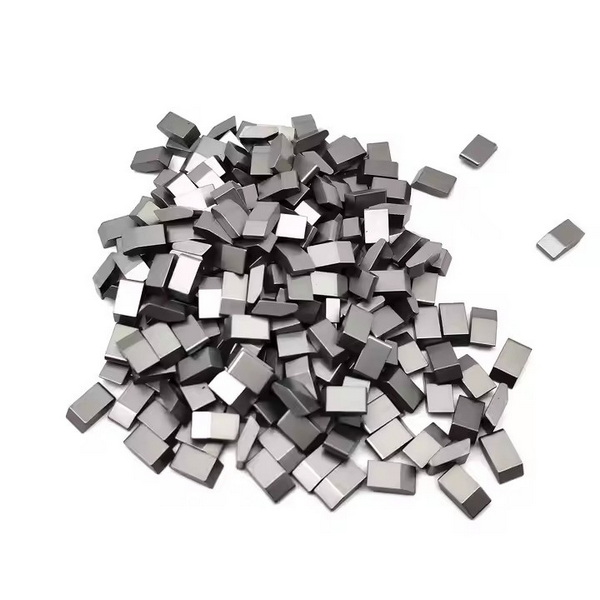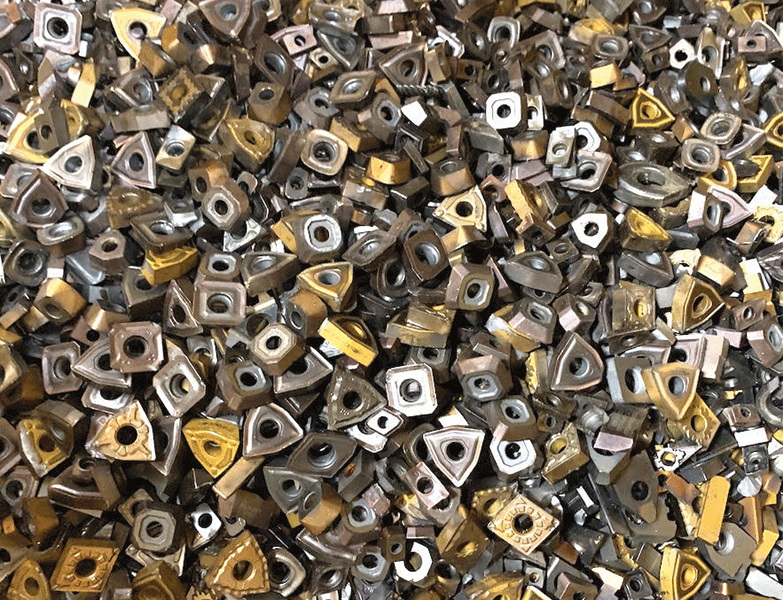Content Menu
● Introduction to Tungsten Carbide
>> Uses of Tungsten Carbide
● Health Risks Associated with Tungsten Carbide
>> Inhalation Risks
>> Skin and Eye Irritation
>> Carcinogenic Concerns
● Environmental Impact
● Mitigating Health Risks
● Technological Advancements
>> Sustainable Alternatives
● Regulatory Frameworks
>> Enforcement and Compliance
● Future Directions
● Conclusion
● FAQs
>> 1. What are the primary health risks associated with tungsten carbide exposure?
>> 2. How can workers protect themselves from tungsten carbide dust?
>> 3. Is tungsten carbide carcinogenic?
>> 4. What are the common uses of tungsten carbide?
>> 5. Can tungsten carbide cause skin allergies?
● Citations:
Tungsten carbide is a metal alloy renowned for its exceptional hardness, durability, and resistance to wear and corrosion. It is widely used in various industries, including manufacturing, automotive, and even in consumer products like jewelry. However, despite its beneficial properties, tungsten carbide poses significant health risks, particularly during its production and processing stages. This article delves into the dangers associated with tungsten carbide, its health effects, and how to mitigate these risks.

Introduction to Tungsten Carbide
Tungsten carbide is a compound of tungsten and carbon, often mixed with other metals like cobalt or nickel to enhance its properties. It is used in cutting tools, wear parts, and other applications where high hardness is required. The alloy's popularity stems from its ability to withstand extreme conditions, making it an essential material in modern manufacturing.
Uses of Tungsten Carbide
- Manufacturing Tools: Tungsten carbide is used in drill bits, saw blades, and other cutting tools due to its hardness and wear resistance.
- Automotive Parts: It is used in engine components and wear parts to reduce friction and enhance durability.
- Jewelry: Tungsten carbide rings are popular for their scratch resistance and durability.
Health Risks Associated with Tungsten Carbide
The primary health risks associated with tungsten carbide arise from inhalation of its dust or powder during manufacturing processes. These risks include respiratory issues, skin allergies, and potential carcinogenic effects when combined with other metals like cobalt.
Inhalation Risks
Inhaling tungsten carbide dust can lead to respiratory problems such as wheezing, coughing, and shortness of breath. Prolonged exposure may result in permanent lung damage, including conditions like pulmonary fibrosis or "hard metal lung disease" when cobalt is present. This condition is characterized by inflammation and scarring in the lungs, which can severely impair lung function.
Skin and Eye Irritation
Contact with tungsten carbide dust can cause severe skin burns and eye irritation. Skin exposure may lead to allergic reactions, resulting in rashes or itching. In severe cases, prolonged exposure can lead to dermatitis, a condition that causes redness, itching, and blistering of the skin.
Carcinogenic Concerns
Tungsten carbide combined with cobalt (WC-Co) is classified as "probably carcinogenic to humans" by the International Agency for Research on Cancer (IARC). This classification is based on limited evidence in humans but sufficient evidence in experimental animals. The presence of cobalt significantly increases the risk of cancer due to its toxic effects on cells.
Environmental Impact
Besides health risks, tungsten carbide also has environmental implications. The mining of tungsten can lead to soil and water pollution, affecting local ecosystems. Additionally, the production process involves high energy consumption and can result in greenhouse gas emissions.

Mitigating Health Risks
To minimize exposure risks, several safety measures can be implemented:
1. Use Protective Gear: Workers should wear respirators, gloves, and safety glasses to prevent skin and eye contact and inhalation of dust.
2. Local Exhaust Ventilation: Proper ventilation systems can reduce airborne dust concentrations.
3. Wet Methods: Using wet methods for grinding or cutting can help suppress dust formation.
4. Regular Health Checks: Regular medical check-ups are crucial for early detection of health issues related to tungsten carbide exposure.
5. Training and Education: Providing workers with comprehensive training on handling tungsten carbide safely can reduce accidents and exposure.
Technological Advancements
Recent technological advancements aim to reduce the risks associated with tungsten carbide. For instance, developing new materials that mimic the hardness of tungsten carbide without the health risks is an active area of research. Additionally, improving manufacturing processes to minimize dust generation is crucial for reducing exposure.
Sustainable Alternatives
Researchers are exploring sustainable alternatives to tungsten carbide, such as advanced ceramics and nanomaterials. These alternatives aim to provide similar hardness and durability while being safer for workers and the environment.
Regulatory Frameworks
Regulatory bodies worldwide have established guidelines to limit exposure to tungsten carbide dust. These regulations often include permissible exposure limits (PELs) and require employers to implement safety measures to protect workers. Compliance with these regulations is essential to mitigate health risks.
Enforcement and Compliance
Ensuring compliance with these regulations involves regular inspections and audits of workplaces. Employers must also maintain detailed records of worker exposure levels and implement corrective actions when necessary.
Future Directions
As technology continues to evolve, there is a growing focus on developing safer materials and processes. Innovations in material science could lead to the creation of materials that offer the benefits of tungsten carbide without its risks. Additionally, advancements in automation and robotics may reduce human exposure to hazardous materials during manufacturing.
Conclusion
Tungsten carbide, while beneficial in many industrial applications, poses significant health risks, particularly during its production and processing. Understanding these risks and implementing proper safety measures are crucial to protecting workers' health. As research continues to uncover more about the long-term effects of tungsten carbide exposure, it is essential to remain vigilant and proactive in mitigating these hazards.

FAQs
1. What are the primary health risks associated with tungsten carbide exposure?
The primary health risks include respiratory issues like pulmonary fibrosis, skin allergies, and potential carcinogenic effects when combined with cobalt.
2. How can workers protect themselves from tungsten carbide dust?
Workers can protect themselves by using respirators, gloves, safety glasses, and ensuring proper ventilation in the workplace.
3. Is tungsten carbide carcinogenic?
Tungsten carbide combined with cobalt is classified as "probably carcinogenic to humans" by the IARC.
4. What are the common uses of tungsten carbide?
Tungsten carbide is commonly used in manufacturing tools, automotive parts, and jewelry due to its hardness and durability.
5. Can tungsten carbide cause skin allergies?
Yes, exposure to tungsten carbide can cause skin allergies, leading to rashes or itching.
Citations:
[1] https://int-enviroguard.com/blog/tungsten-carbide-exposure-are-your-workers-at-risk/
[2] https://pmc.ncbi.nlm.nih.gov/articles/PMC2679595/
[3] https://nj.gov/health/eoh/rtkweb/documents/fs/1960.pdf
[4] http://www.casmetcarbide.com/images/Casmet_MSDS-WC.pdf
[5] https://pmc.ncbi.nlm.nih.gov/articles/PMC8633919/
[6] https://redwoodrings.com/blogs/redwood-rings-blog/are-tungsten-rings-toxic
[7] https://www.safetyandhealthmagazine.com/articles/work-safely-with-tungsten-carbide-2
[8] https://patient.info/doctor/tungsten-poisoning
[9] https://en.wikipedia.org/wiki/Tungsten_carbide
[10] https://www.reddit.com/r/metallurgy/comments/ub4dg9/question_about_tungsten_carbide_toxicity/
[11] https://www.ipsceramics.com/wp-content/uploads/2022/01/HSDS-14-Tungsten-Carbide-Issue-1.pdf
[12] https://www.ncbi.nlm.nih.gov/books/NBK598735/
[13] https://carbideprocessors.com/pages/carbide-parts/brazing-tungsten-carbide-health-and-safety.html
[14] https://www.alamy.com/stock-photo/tungsten-carbide.html
[15] https://stacks.cdc.gov/view/cdc/19383
[16] https://www.ns-tool.com/en/download/pdf/SDS-WC-JA20171_en.pdf
[17] https://www.atsdr.cdc.gov/toxfaqs/tfacts186.pdf
[18] https://www.reddit.com/r/chemistry/comments/ub4816/is_tungsten_carbide_jewlery_safe_for_daily_wear/
[19] https://asia.kyocera.com/products/cuttingtools/images/sds/pdf/msds_cemented_carbide_e.pdf
[20] http://tungsten-powder.com/safety-information-of-tungsten-carbide-powder.html
[21] https://www.ufz.de/index.php?en=35548
[22] https://www.fishersci.com/store/msds?partNumber=AA4050218&productDescription=TUNGSTEN+CARBIDE+99%25+50G&vendorId=VN00024248&countryCode=US&language=en
[23] https://pmc.ncbi.nlm.nih.gov/articles/PMC11003356/
[24] https://19january2017snapshot.epa.gov/sites/production/files/2014-03/documents/ffrrofactsheet_contaminant_tungsten_january2014_final.pdf
















